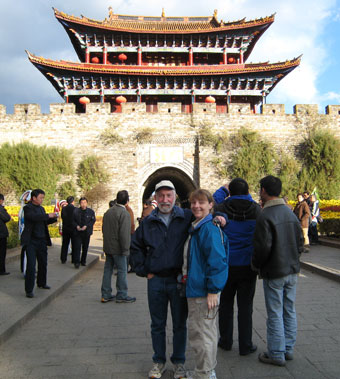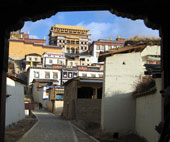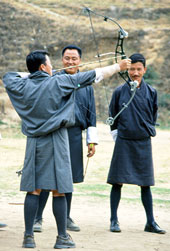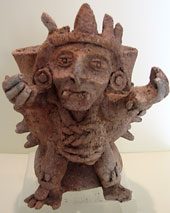
“My grandfather dipped his silver bracelet into the water, to make sure it was not poisoned,” related Chen Dong Mei, her eyes sparkling as she told us stories of her grandfather who drove horses along the historical Tea Horse Road. Mei was our guide in Lijiang, an ancient city in China’s western frontier province of Yunnan. It is in this area that the Tea Horse Road began, thirteen centuries ago.
Driving the horses and mules from Yunnan, China, through the high mountain passes of the centuries-old trail to Tibet was a dangerous occupation. Bandits were a constant threat and it is said that they would poison the streams where the drivers obtained water for their campsites. The silver in the bracelets, which the ethnic Naxi people still wear, would change color when exposed to the poison.
Tea was introduced into Tibet during the Tang dynasty, and a trade developed where the Chinese bartered tea for Tibetan war horses. The Chinese stopped buying horses from Tibet in 1735, but the trade in tea continued to grow.
The road starts near the tropical city of Jing Hong, where the famous Pu’er tea is grown. It then passes through Dali, Lijiang, Zhongdian (in 2001 renamed Shangri-La, in the hope that the name will attract more tourists), and onward to Lhasa in Tibet.
A second route begins in Sichuan province, the site of Yacha tea production, and leads up through some of the most treacherous passes in the world to Lhasa. From Tibet, branch trade routes led south into Myanmar (Burma), Nepal and India.
Even before the Tang dynasty, in the 7th century, the trail was a major route for migration and cultural communication, and ancient tombs along the way have been determined to be almost 5000 years old.
The Tea and Horse Road again became a critical transportation link during World War II, when Japan blocked highways from China and Burma to India. More than 25,000 horses and mules were used to haul everything from sewing machines and canned goods to whiskey and cigarettes over the ancient trails.
Today, the Tea Horse Road is a special route for many indigenous people in the region, which includes the greatest number of ethnic groups in China. Naxi, Dai, Bai, and Thai all have mountains in the region which are sacred to their various religions.
California Native’s tours of Yunan Province follow much of this ancient route.



